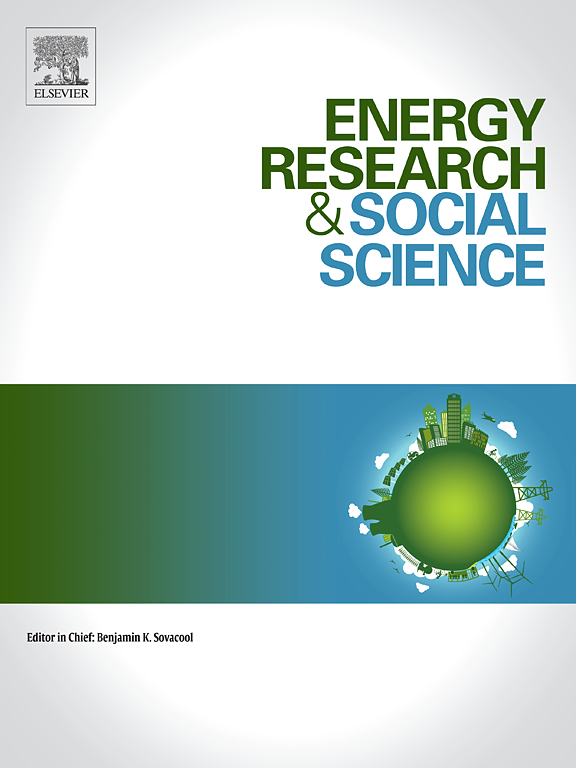Why buy multiple electric vehicles? The roles of vehicle ownership, charging access, and energy choices in California
IF 7.4
2区 经济学
Q1 ENVIRONMENTAL STUDIES
引用次数: 0
Abstract
Switching to electric vehicles will help decarbonize personal transportation, but there may be resistance to electrifying all the vehicles in a household. Vehicle ownership is high in the United States, with over half of households owning two or more vehicles. Electric vehicles are a new technology and there is still much unknown about initial adoption, let alone behavior around subsequent purchases. Early research indicates there are obstacles to owning several electric vehicles at the same time. This work is among the first to study this topic, identifying factors that explain the decision to own multiple electric vehicles. Using a series of cross-sectional questionnaire surveys, we identify households that acquired two or more electric vehicles concurrently (25 %) and others that chose to only acquire one (75 %). Electric vehicles comprise vehicles that fully or partially utilize electricity as fuel and can plug-in to charge. Responses are from 4400 California households between 2015 and 2020 who acquired two or more new vehicles, including at least one electric vehicle. We use logistic regression to determine the most influential behaviors, characteristics, and vehicle choices that differentiate these households. Results indicate that there is lower ownership of multiple electric vehicles in households with fewer vehicles or households that own vehicles of certain larger body styles. On the other hand, several other factors correlate with higher adoption including previously owning electric vehicles, access to moderately fast electric vehicle charging at home, household solar, and using an electric vehicle to commute.
为什么要买多辆电动车?在加州,车辆所有权、充电通道和能源选择的作用
改用电动汽车将有助于减少个人交通工具的碳排放,但对一个家庭的所有车辆都通电可能会遇到阻力。美国的汽车拥有率很高,超过一半的家庭拥有两辆或更多的汽车。电动汽车是一项新技术,最初的采用情况仍有很多未知,更不用说随后的购买行为了。早期的研究表明,同时拥有几辆电动汽车存在障碍。这项工作是第一批研究这一主题的研究之一,它确定了解释决定拥有多辆电动汽车的因素。通过一系列横断面问卷调查,我们确定了同时购买两辆或更多电动汽车的家庭(25%)和选择只购买一辆电动汽车的家庭(75%)。电动汽车包括完全或部分利用电力作为燃料并可以插入式充电的车辆。在2015年至2020年期间,加州有4400户家庭购买了两辆或两辆以上的新车,其中至少包括一辆电动汽车。我们使用逻辑回归来确定区分这些家庭的最具影响力的行为、特征和车辆选择。结果表明,车辆较少的家庭或拥有某些较大车身样式的家庭拥有多辆电动汽车的比例较低。另一方面,其他几个因素与更高的采用率相关,包括以前拥有电动汽车,在家中获得中等快速的电动汽车充电,家用太阳能,以及使用电动汽车上下班。
本文章由计算机程序翻译,如有差异,请以英文原文为准。
求助全文
约1分钟内获得全文
求助全文
来源期刊

Energy Research & Social Science
ENVIRONMENTAL STUDIES-
CiteScore
14.00
自引率
16.40%
发文量
441
审稿时长
55 days
期刊介绍:
Energy Research & Social Science (ERSS) is a peer-reviewed international journal that publishes original research and review articles examining the relationship between energy systems and society. ERSS covers a range of topics revolving around the intersection of energy technologies, fuels, and resources on one side and social processes and influences - including communities of energy users, people affected by energy production, social institutions, customs, traditions, behaviors, and policies - on the other. Put another way, ERSS investigates the social system surrounding energy technology and hardware. ERSS is relevant for energy practitioners, researchers interested in the social aspects of energy production or use, and policymakers.
Energy Research & Social Science (ERSS) provides an interdisciplinary forum to discuss how social and technical issues related to energy production and consumption interact. Energy production, distribution, and consumption all have both technical and human components, and the latter involves the human causes and consequences of energy-related activities and processes as well as social structures that shape how people interact with energy systems. Energy analysis, therefore, needs to look beyond the dimensions of technology and economics to include these social and human elements.
 求助内容:
求助内容: 应助结果提醒方式:
应助结果提醒方式:


